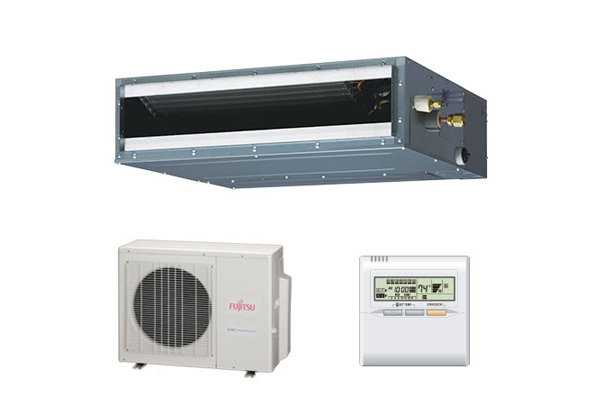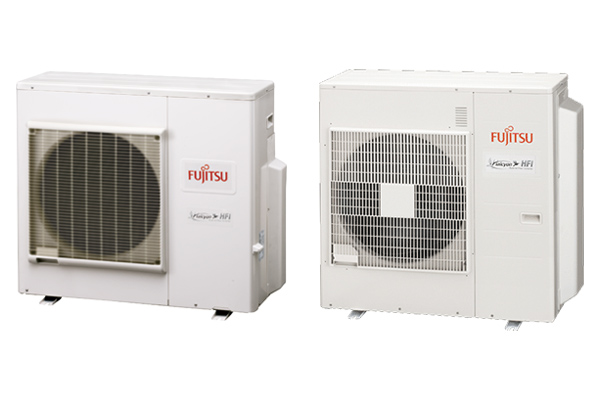Information About Concealed Duct Mini-Split Systems

A wall-mounted ductless system is the most popular and commonly used type of mini-split. However, not every homeowner likes the exposure of the indoor air handler of a wall-mounted system. Thus, there is a demand to conceal these mini-split air handlers.
If you are searching for an almost invisible type of zoned cooling, then a concealed duct mini-split might be what you are looking for. A concealed duct offers a discreet option over its ductless counterparts. The bulk of the indoor air handler is hidden in the attic, dropped ceiling, or crawl space. It utilizes the ductwork to circulate the conditioned air, which the system releases to its assigned zone via a ceiling, floor, or wall grille.
Concealed Duct Mini-Split Systems: What You Need To Know
Contents
- 1 Concealed Duct Mini-Split Systems: What You Need To Know
- 2 Call Townsend Energy For All OF Your Home Heating And Cooling Needs
Parts Of A Concealed Duct
Concealed duct systems have different parts. Each of these parts is essential in the operation of the system as a whole.
Indoor Unit
- Indoor power supply– supplies power to the unit
- Communication cable– connects the indoor unit to the outdoor unit
- Diffusers– where the conditioned air is released into the living space
- Flexible ducts– distributes the air across various diffusers in the room
- Return air grilles– acts as an air filter to remove dust and other particulates
- Motorized dampers– allows the unit to have zoning capabilities
- Wired tether controller– controls the indoor unit
Indoor Unit Accessories
- Hanger– supports the indoor unit
- Nut with washer– fastens the hanger brackets to the unit
- Nut– used in the unit installation along with the suspension bolt
- Washer– like the nut, it is used with the suspension bolt
- Pipe insulation– insulates the gas and liquid pipes
- Flare nut– connects the liquid and gas pipes
- Fastener– fastens the insulation blanket
Outdoor Unit
- Service cover– used to conceal the lines connected to the outdoor unit
- Front panel– located upfront of an outdoor unit, it serves as a cover for the mechanisms of the outdoor unit
- Gas pipe– transports the refrigerant in its gaseous state
- Liquid pipe– where the coolant flows in its liquid state
- Drain hose– where the condensate flows to be appropriately disposed of
- Outdoor power supply– supplies the outdoor unit with power
Outdoor Unit Accessories
- Drain plug– used to plug the drain hole
- Drainage connector– connects with the PVC drain pipe
Features of A Concealed Duct

A concealed duct is a hidden system that allows you superior indoor climate controls. The conditioned air is distributed via the ductwork and is released to your living space through an inconspicuous wall or ceiling grille. It also gives you the flexibility to choose the type of grille that will best fit individual zones, making it a versatile and powerful cooling solution.
Some of the key features a concealed duct has are:
Low Profile
A discreet ducted unit is installed above or below the zone it is serving, utilizing short-run ductwork. The bulk of its mechanism is hidden from view, and only a small grille is visible. Therefore, it can keep you comfortable all year round without affecting your home’s aesthetics.
Whisper-Quiet Operation
Indoor air handlers of concealed ducts operate as quiet as a whisper. It allows you to do your day-to-day activities around your home without any annoying sound coming from your HVAC system.
Automatic Changes
A concealed duct features an automatic mode that allows the system to switch between heating and cooling modes. This helps maintain consistent temperatures throughout the zone it is serving.
Comfort Control
You can install additional accessories to the concealed duct’s wall-mounted controller or in the intake air grille. These accessories are designed to help you maximize comfort. An example is an HVAC temperature sensor that determines changes in the zone’s temperature. This allows your system to provide you with precise temperature control.
Remote Control
A concealed duct also lets you choose the remote controller that best fits your lifestyle. It could be a wall-mounted controller. You can also control the system via an app on your smartphone or tablet. The latter is perfect for when you and your family are often away from home for most of the day or vacation. You can set your system up so that you can manage the settings anywhere. You never have to return to a house that is blazing hot or ice cold.
Other Features
A concealed duct system has optional features, depending on the brand, make, and model. Some of these are:
- Fresh air intake provision
- Adjustable external static pressure
- Anti-cold air function
- Convertible return air provision
- Refrigerant leakage detector
- Drain pump with float switch
When To Choose A Concealed Duct
Homeowners who want an out-of-sight HVAC system should consider installing a concealed duct. This system allows for the system to be hidden behind the floor or ceiling, and only the grille covers can be seen. Therefore, this type of system is perfect for those who put aesthetic value high up on their priority list.
Concealed ducts have high-efficiency ducts that can evenly distribute conditioned air even in large rooms. It uses short-run ducts to circulate the air through different outlets across the room, and can also supply conditioned air to an adjacent, smaller room. Therefore, if you are worried about tinkering with the current ductwork of your old and inefficient system, then a concealed duct might be the one for you.
Many homeowners use concealed mini-split units to heat or cool living spaces that are otherwise difficult to do so. These spaces include sunrooms, new additions, basements, and historic homes.

Installing A Concealed Duct Unit
You can install a concealed duct in many places across your home. Common installation spaces include the crawlspace or the attic. However, you need to make sure that these spaces have adequate insulation like the rest of your home. If not, then you can build a box around the unit and cover its exterior with insulation. This way, condensation does not form.
If you are using the existing ducts to distribute the conditioned air to various locations in the same room, make sure that transition ducts are in place. You should also buy outlet grilles. If you are planning to put a return air vent in place, then you need to put a filter to protect the unit from any dust, pollutants, and other contaminants.
When installing a concealed duct in the ceiling, you have to ensure that the ceiling can support twice the weight of the unit. Make sure that there is enough space around the unit as this will help make future service and maintenance easier. This also ensures that the air inlet and outlet of the unit is never blocked. Otherwise, the airflow won’t be able to reach every nook and cranny of the room.
Ducting may not be necessary should you decide to install the unit against the surface of the wall. However, you still need to buy a grille so that your unit has a more finished look and to protect the unit as well.
Check Out One Of Our Ductless Installation Projects
Fujitsu Ductless Mini-Split Replacement Project In Salisbury, Massachusetts
Conclusion
A concealed duct gives homeowners who want ducted systems the setup and aesthetic they desire while still benefiting from all the perks a mini-split has to offer. These advantages include quiet operation, high-efficiency, and zoning capabilities.
Hiring a professional with experience and knowledge with mini-split installations is a wise choice. It guarantees that the installation will be up to state and local code. It also assures you that your concealed duct will work to its maximum capabilities and optimum efficiency. Rest assured that a qualified HVAC technician can assist you from start to finish, from choosing the best make and model for your home to testing out the installation.
Call Townsend Energy For All OF Your Home Heating And Cooling Needs

If you are ready to switch to a ductless HVAC system or have more questions, call Townsend Energy today. Our experienced NATE-certified technicians will discuss your needs and requirements to help you find the best ductless HVAC system for you.
Townsend Energy is a full-service HVAC company that services residential and commercial properties throughout New England. We offer a range of heating and cooling services, including HVAC installations, repairs, tune-ups, and more. Our experienced, NATE certified professionals can find the best home heating and cooling solutions for your home while working with your budget. We aim to improve your home’s level of energy efficiency, comfort, and indoor air quality. Our work is backed by a warranty to ensure your satisfaction. We also provide free, in-home estimates. Call Townsend Energy today.
Contact us now at (800) 722-4101 to find out more!
